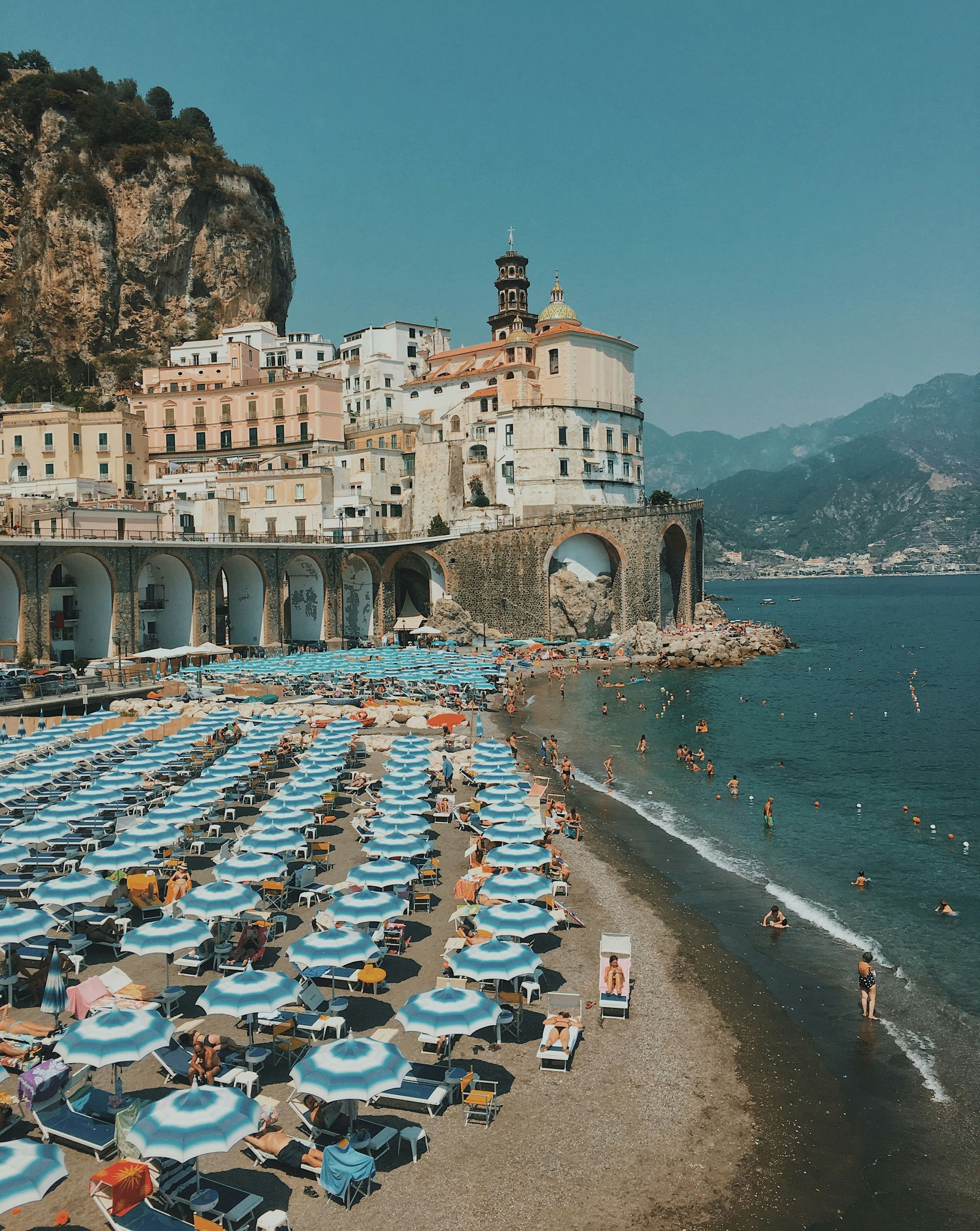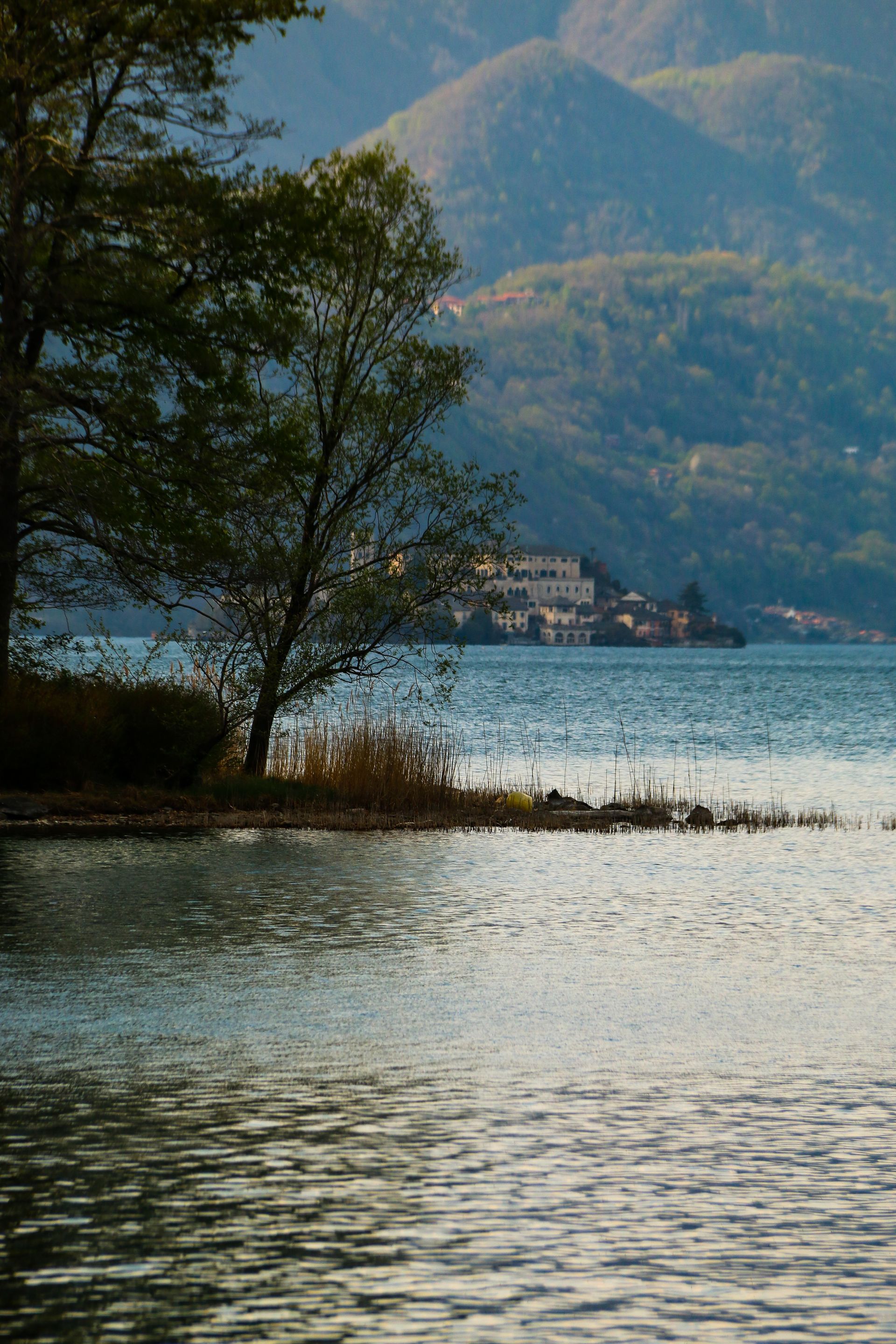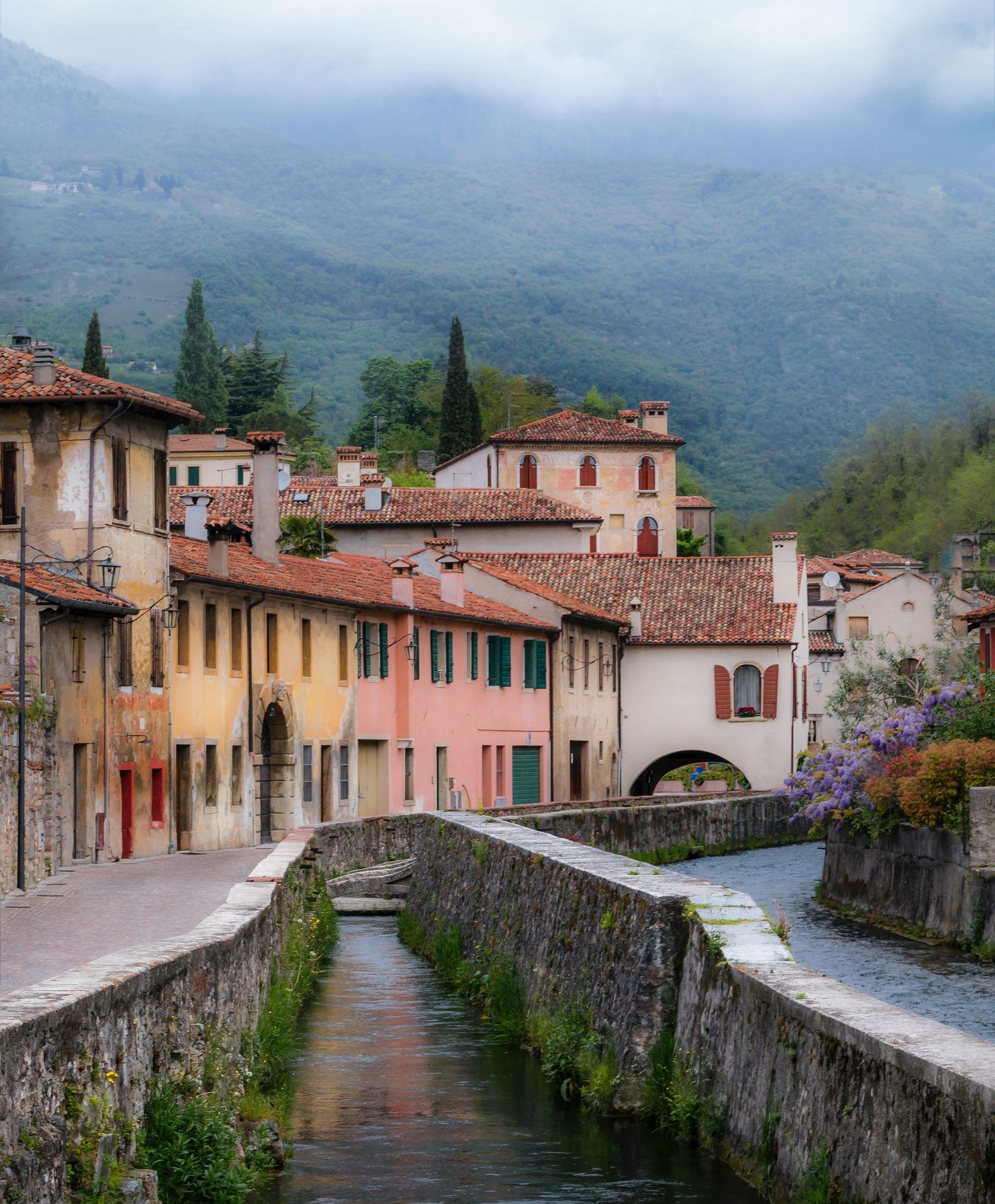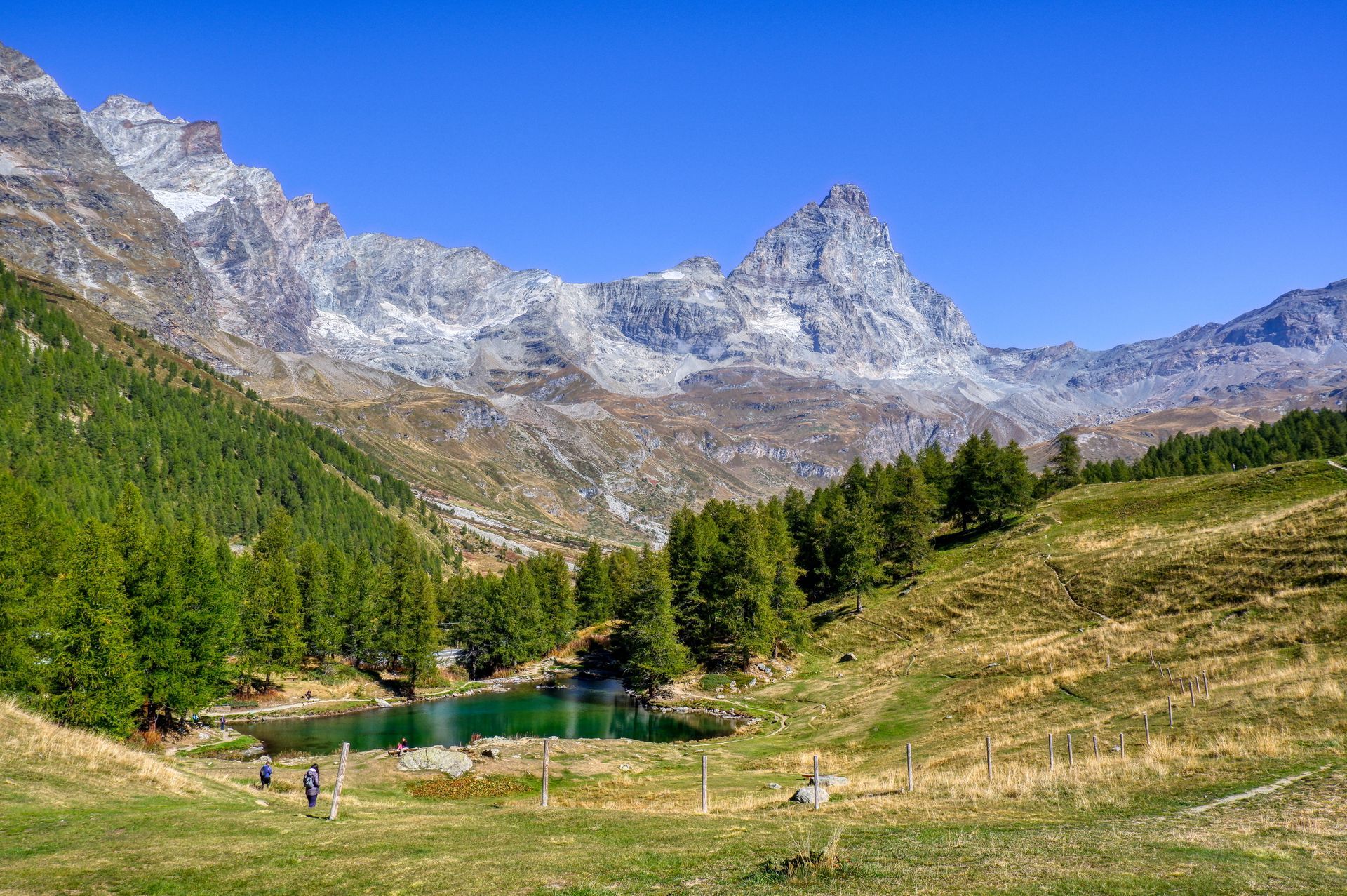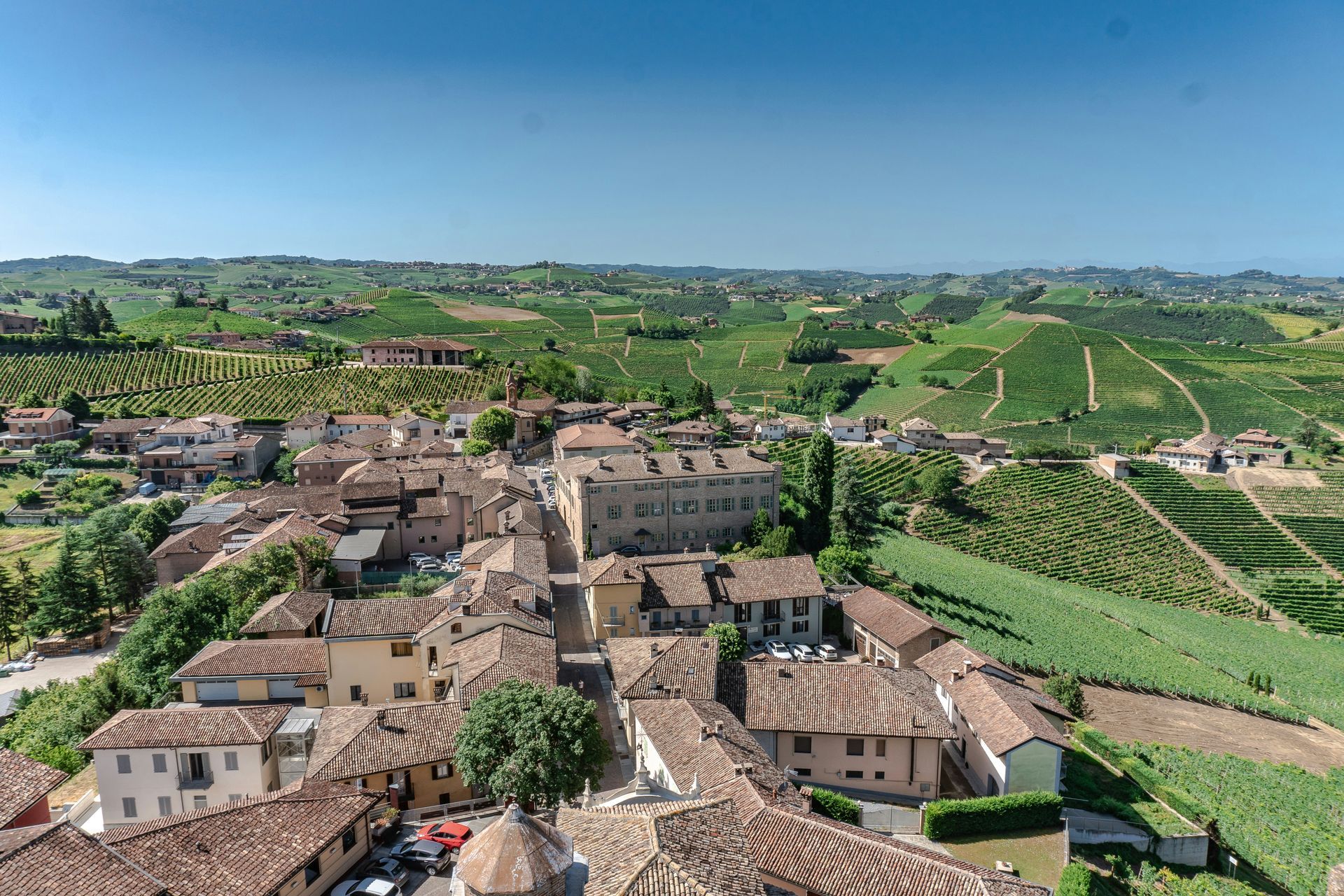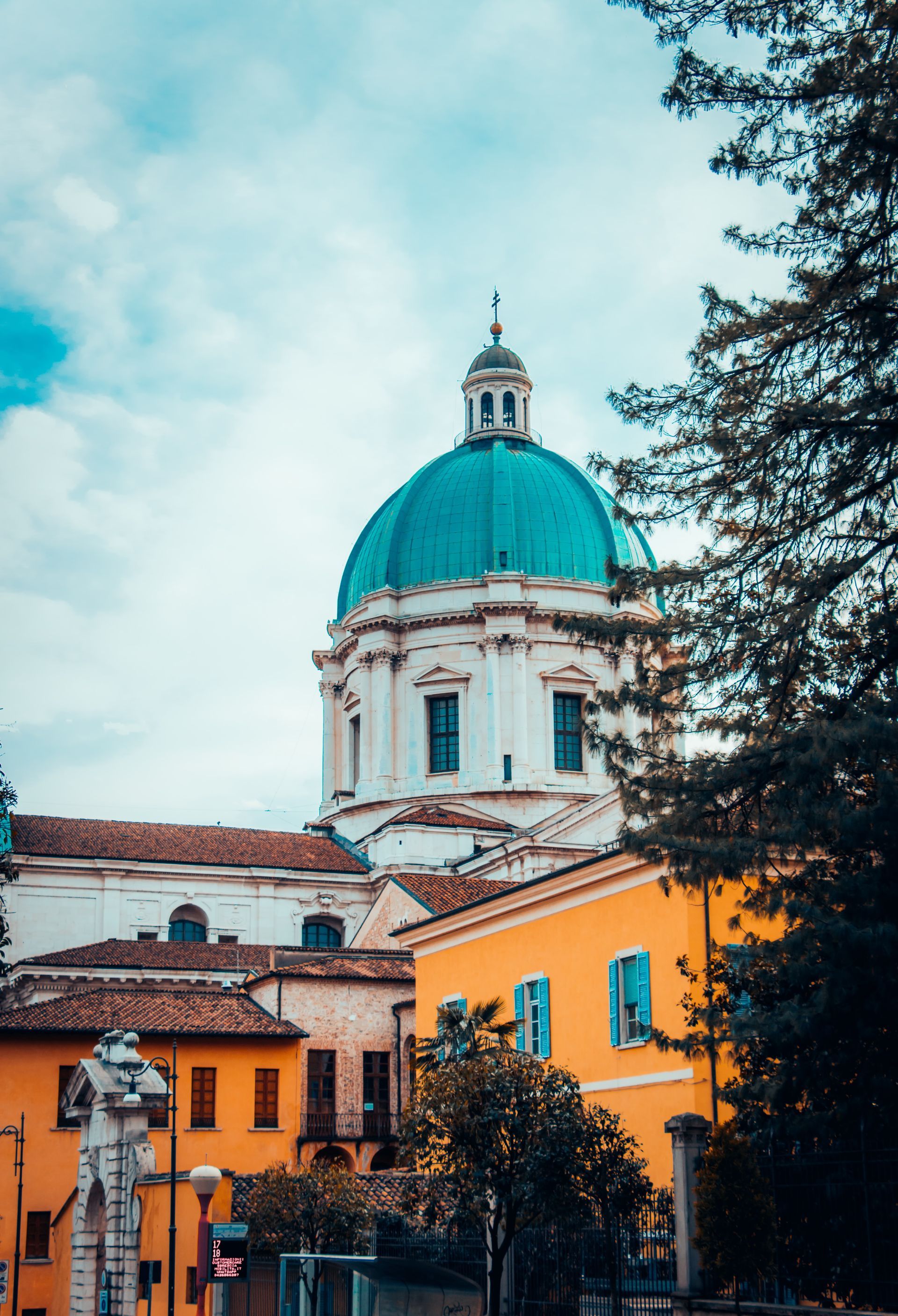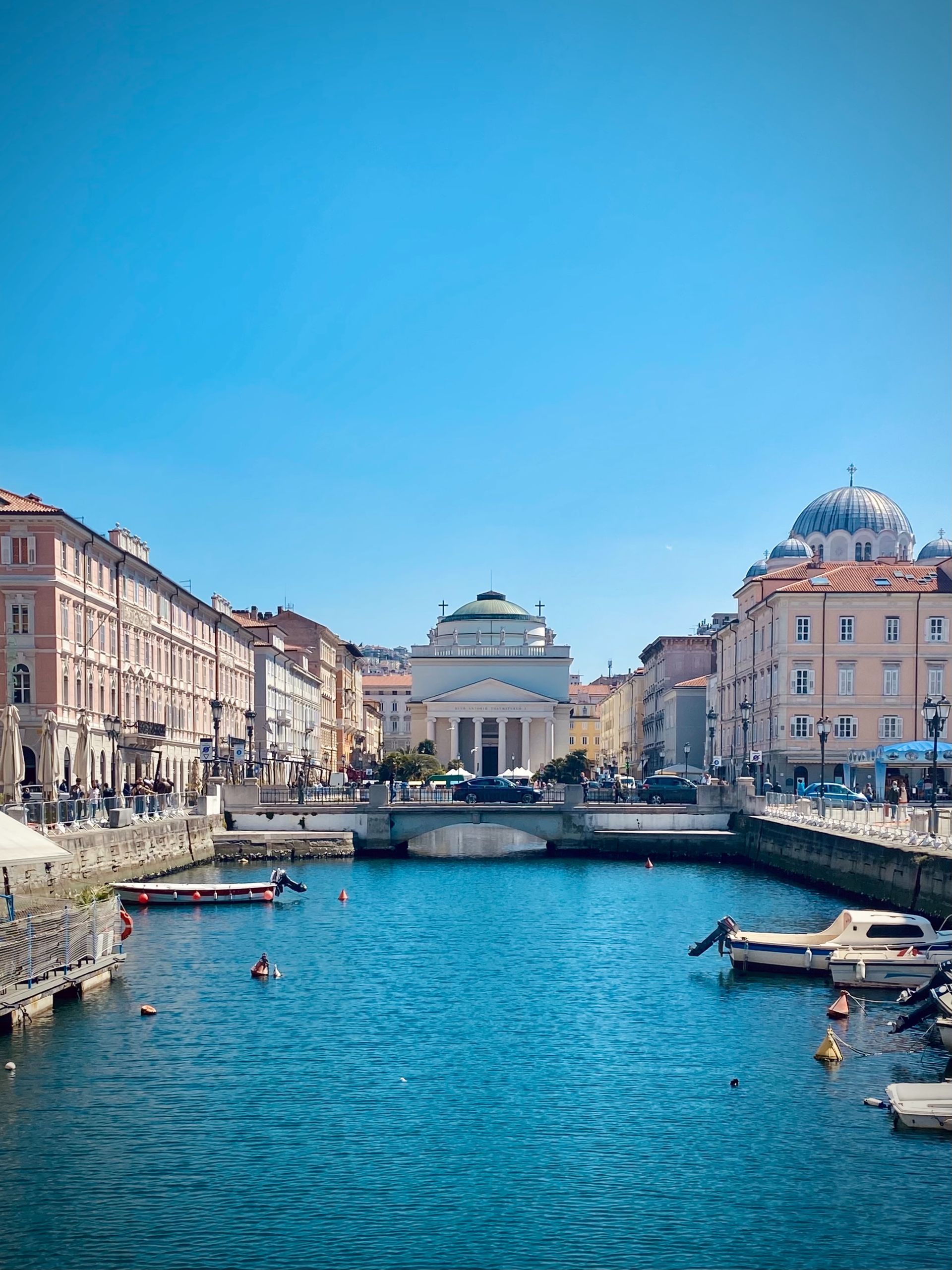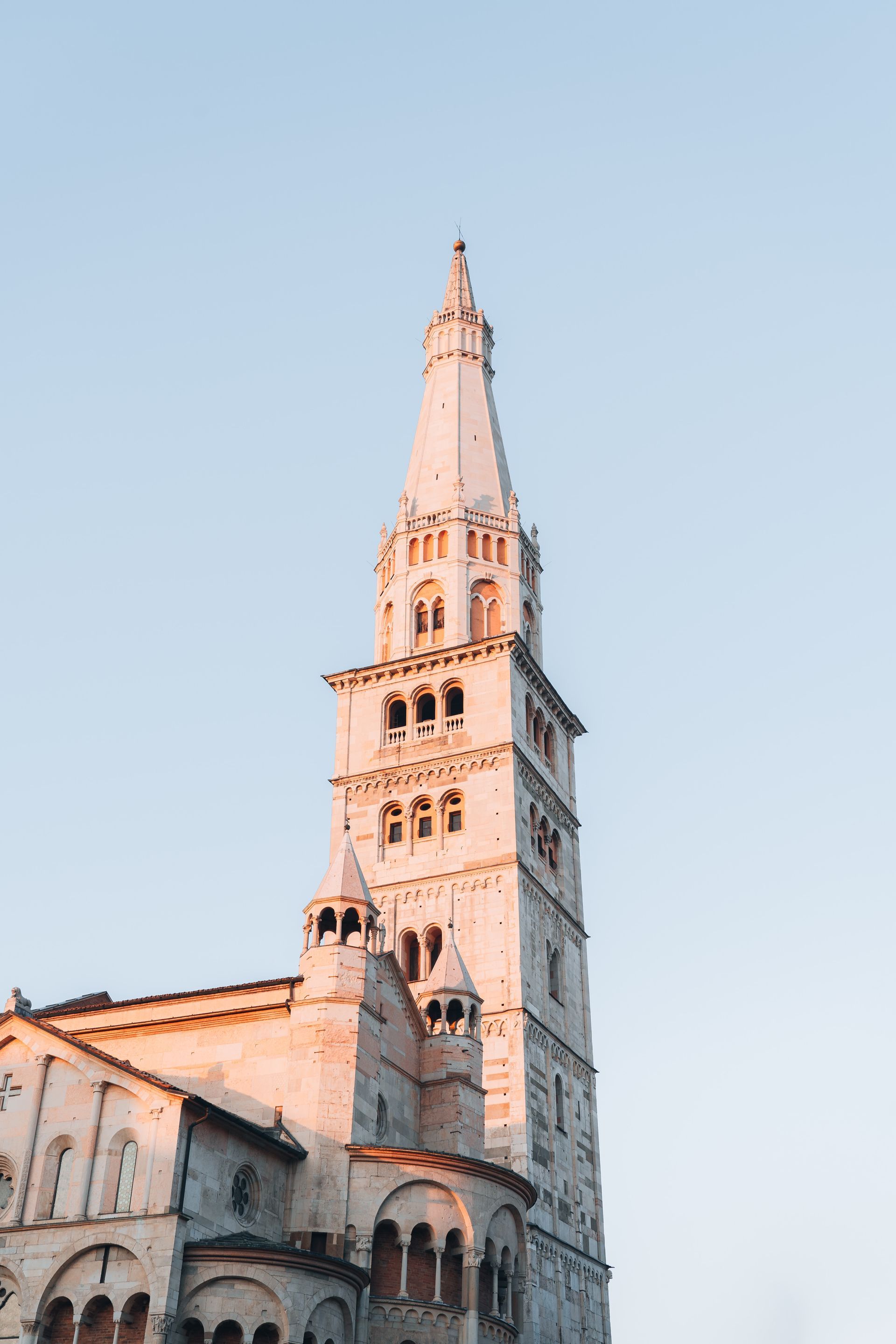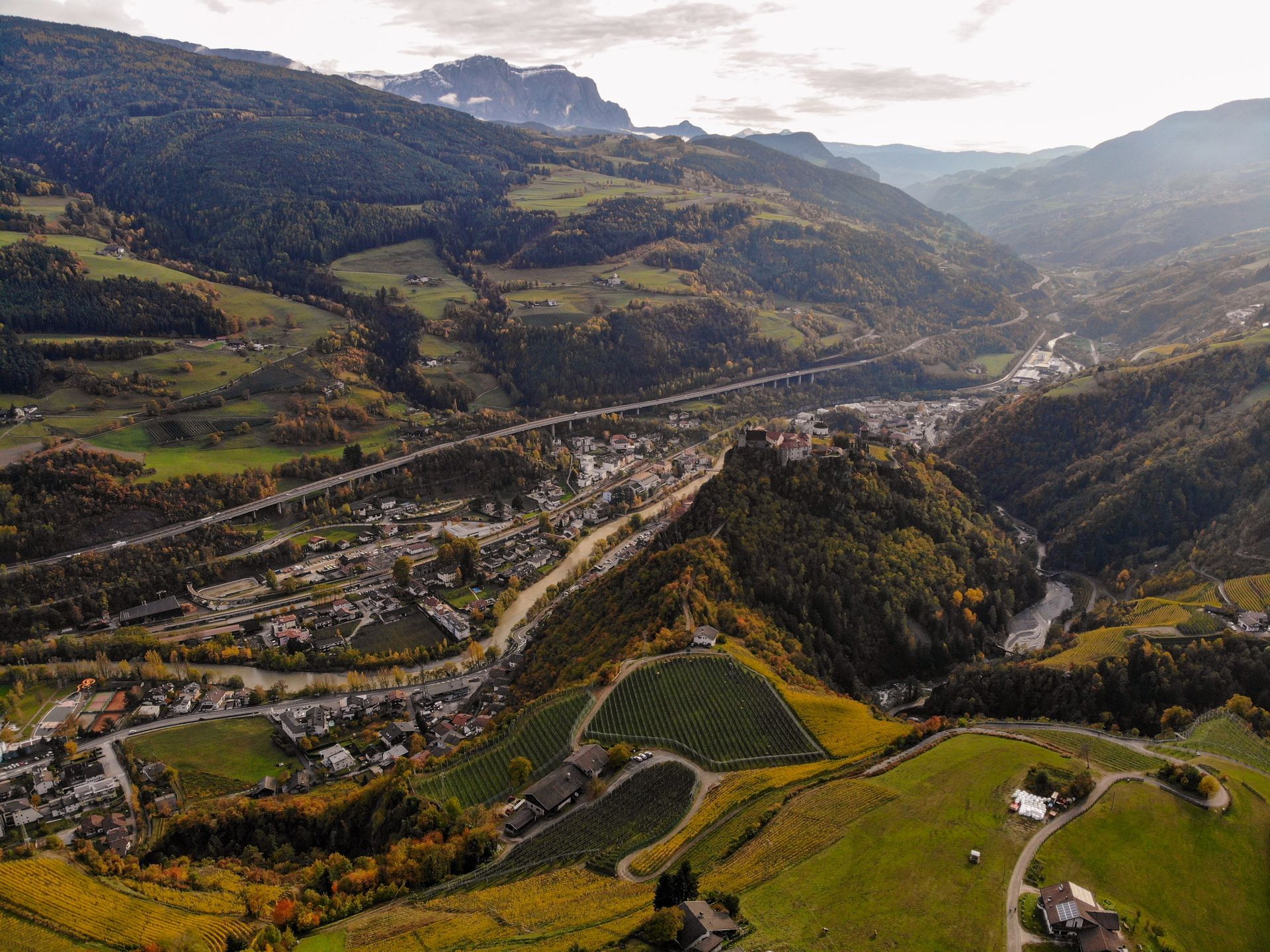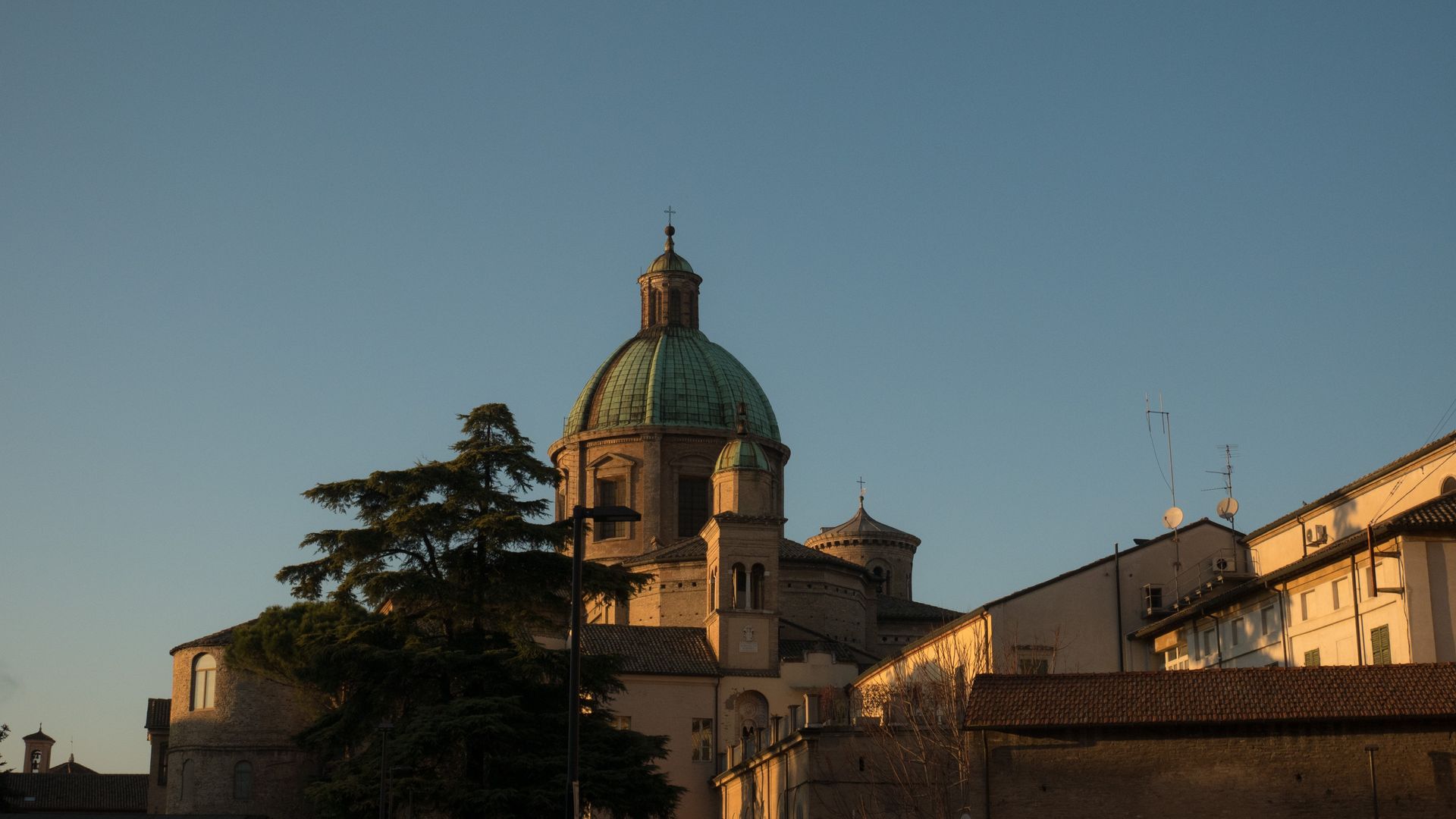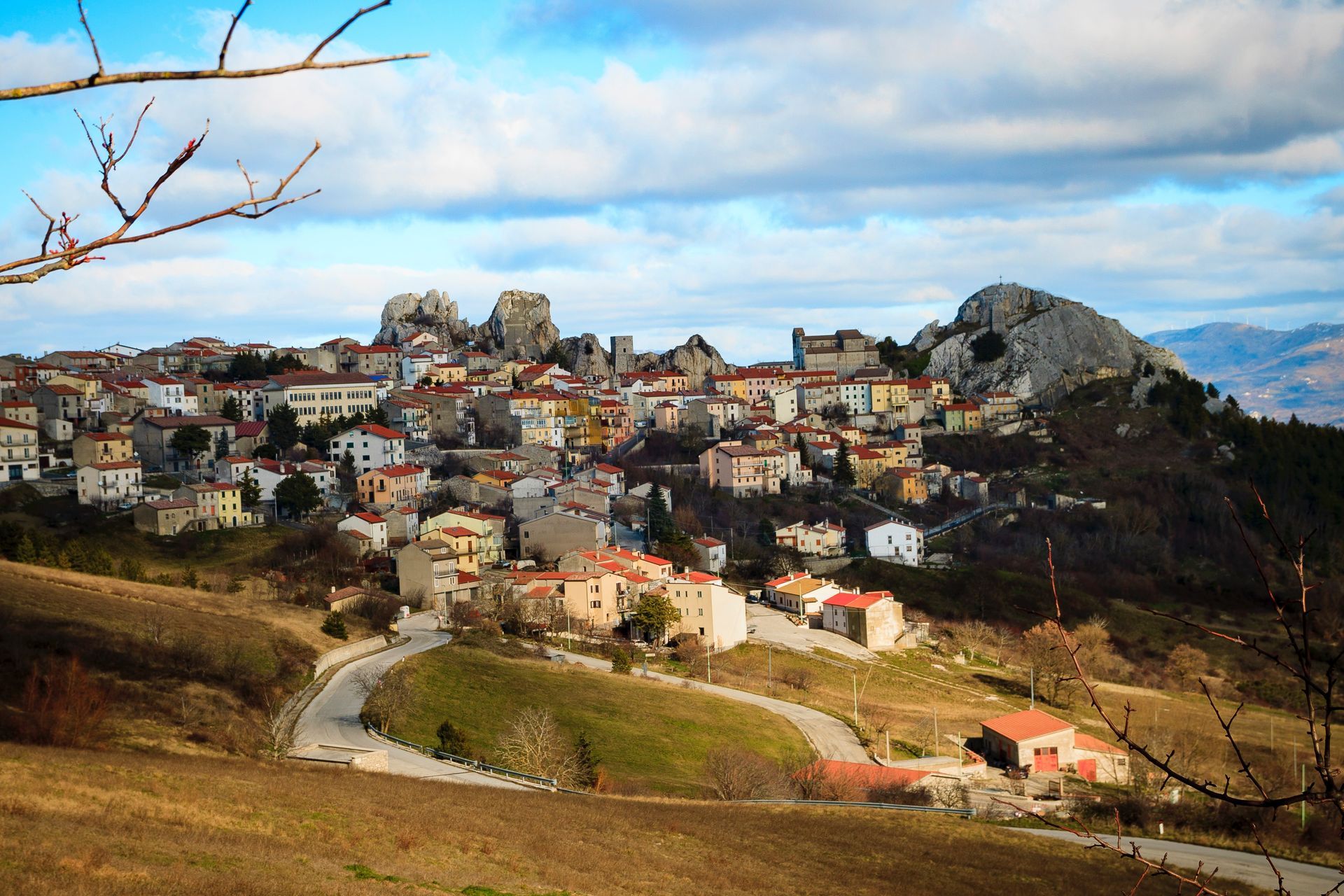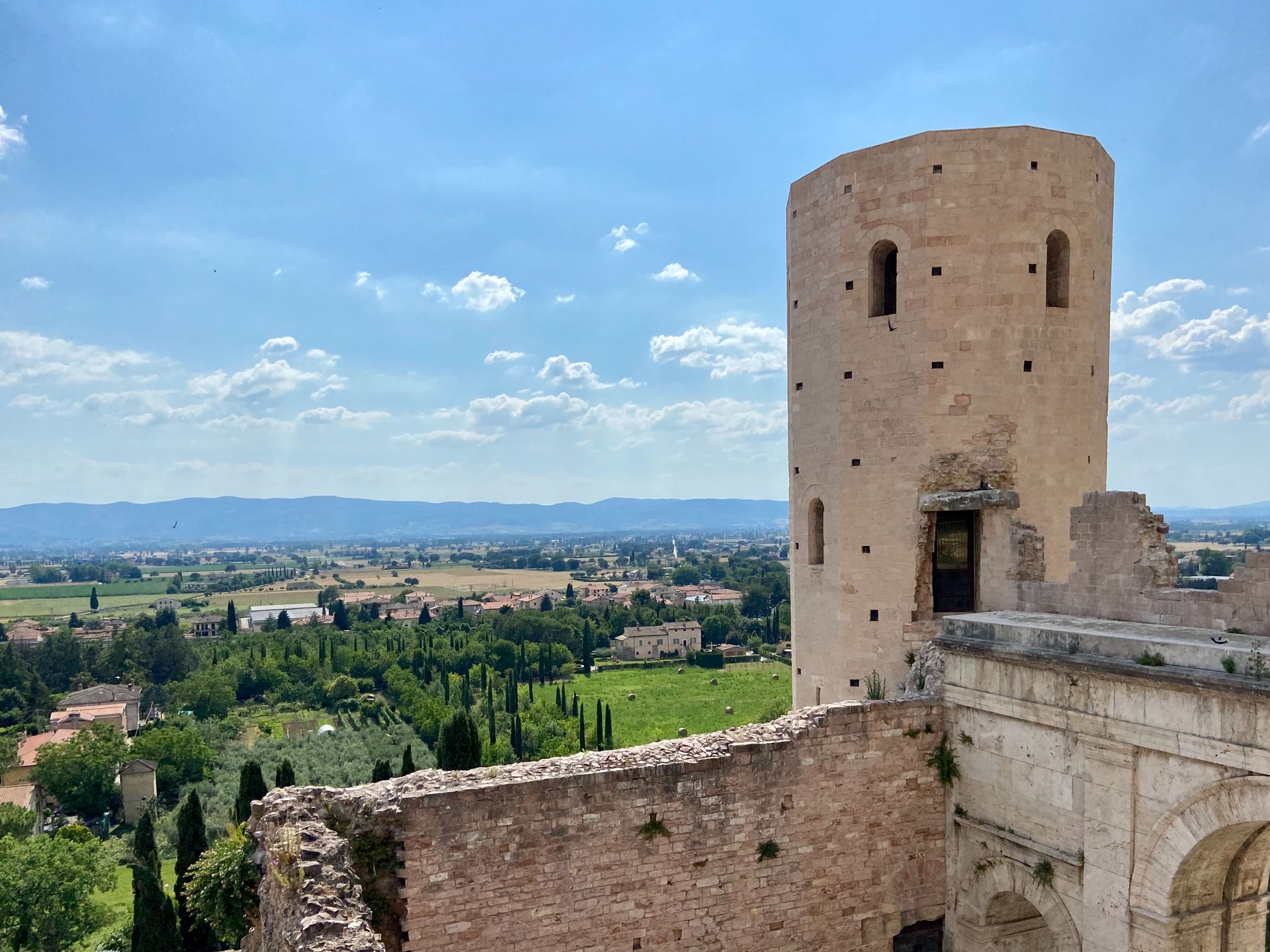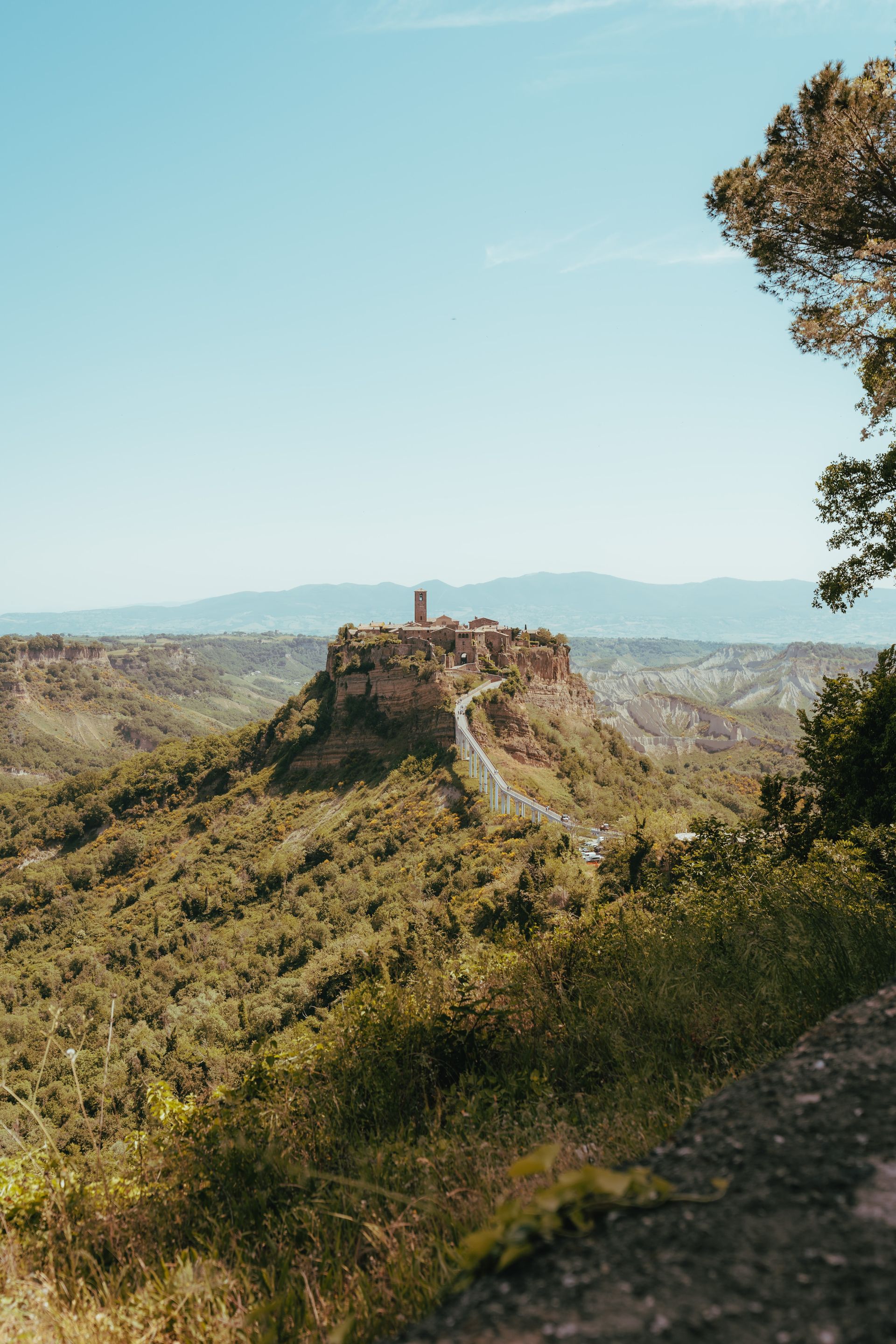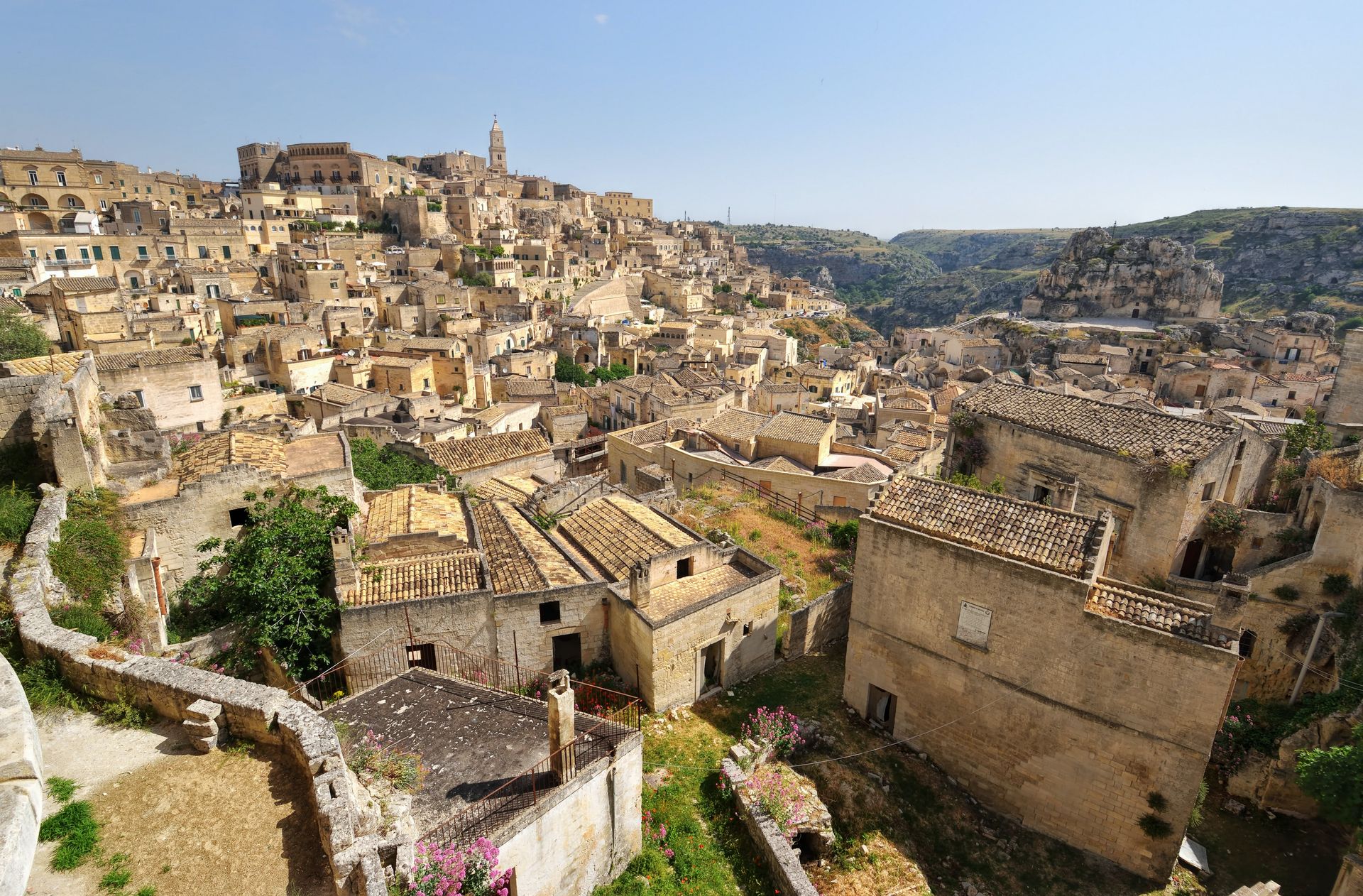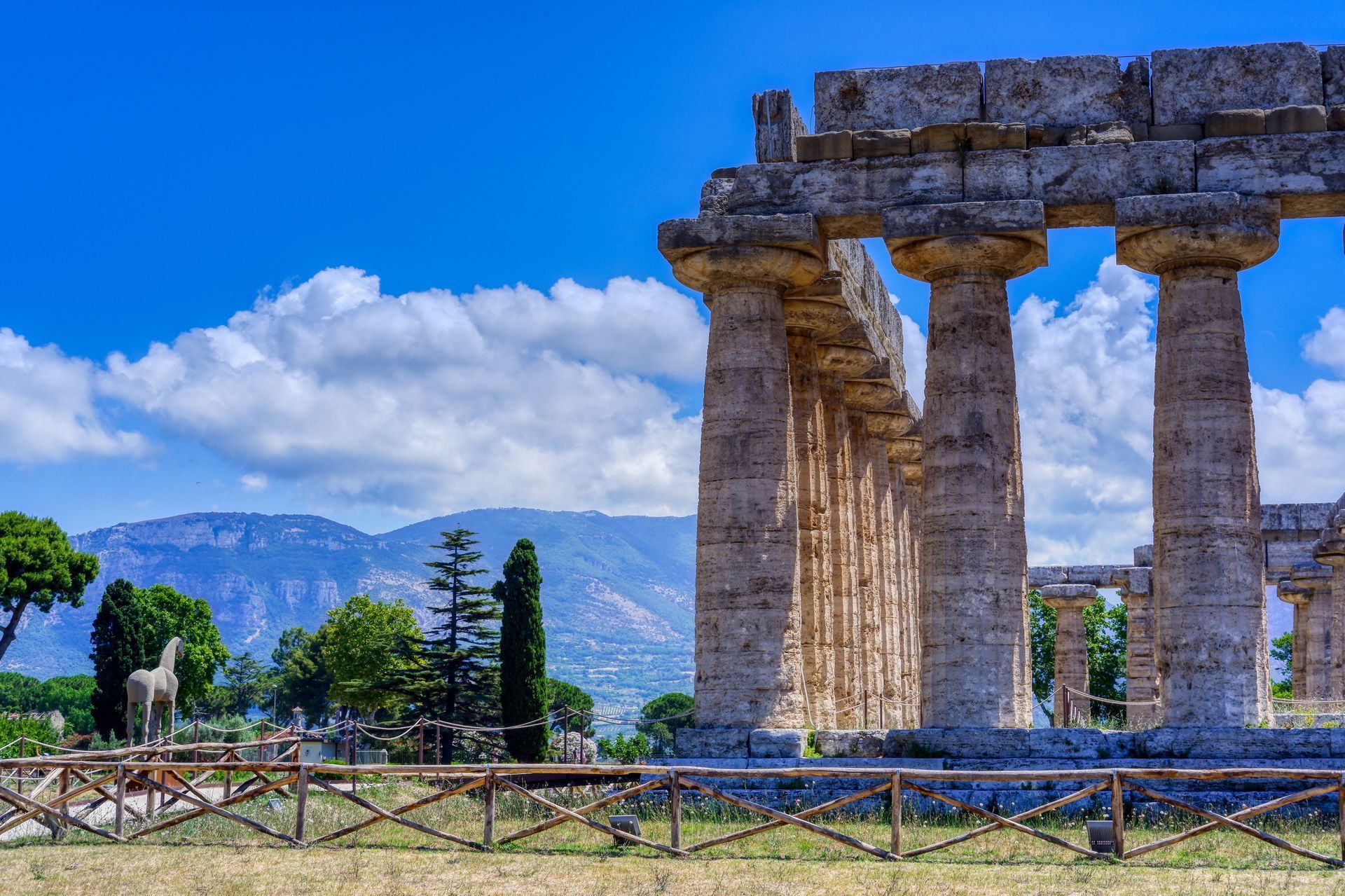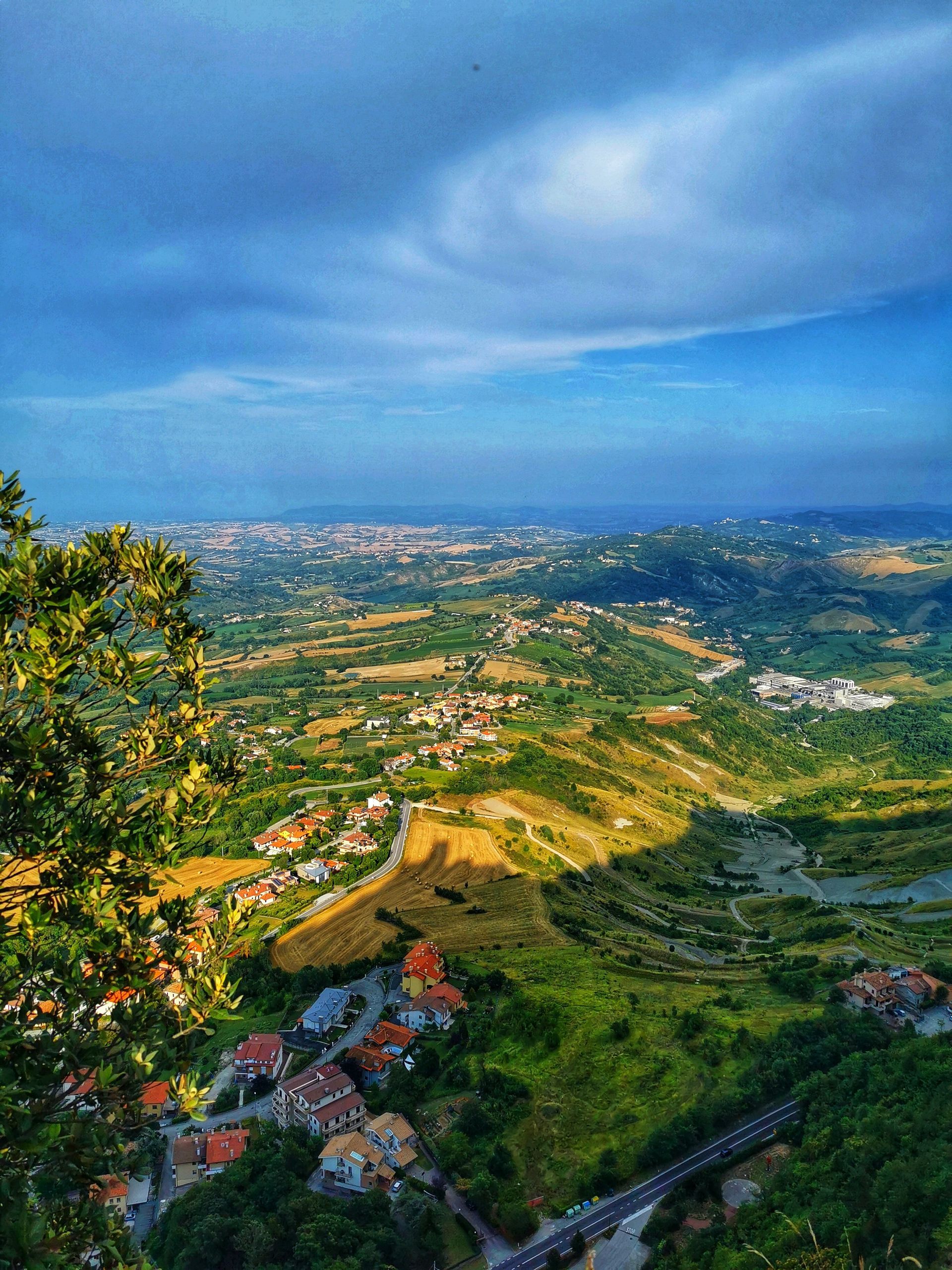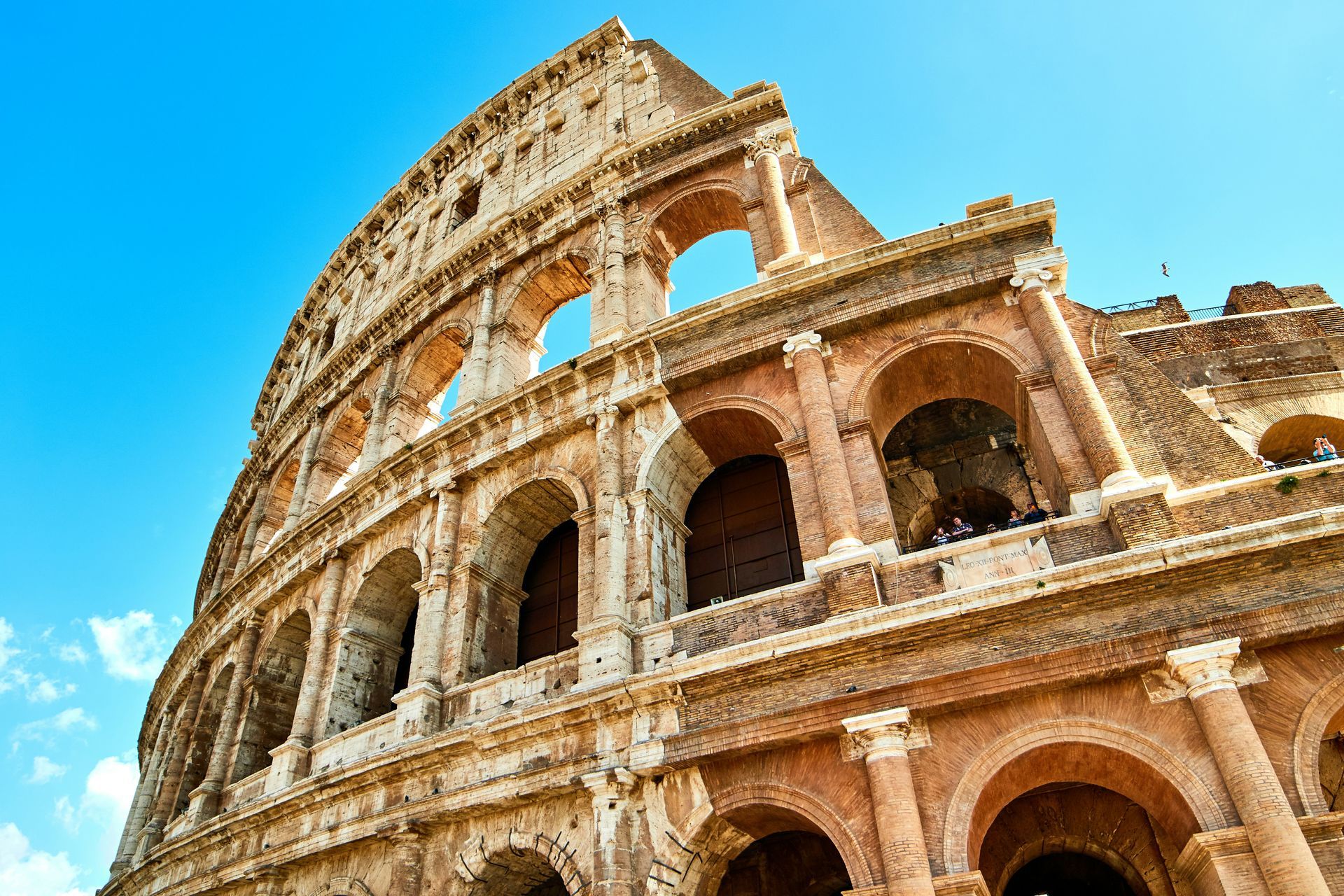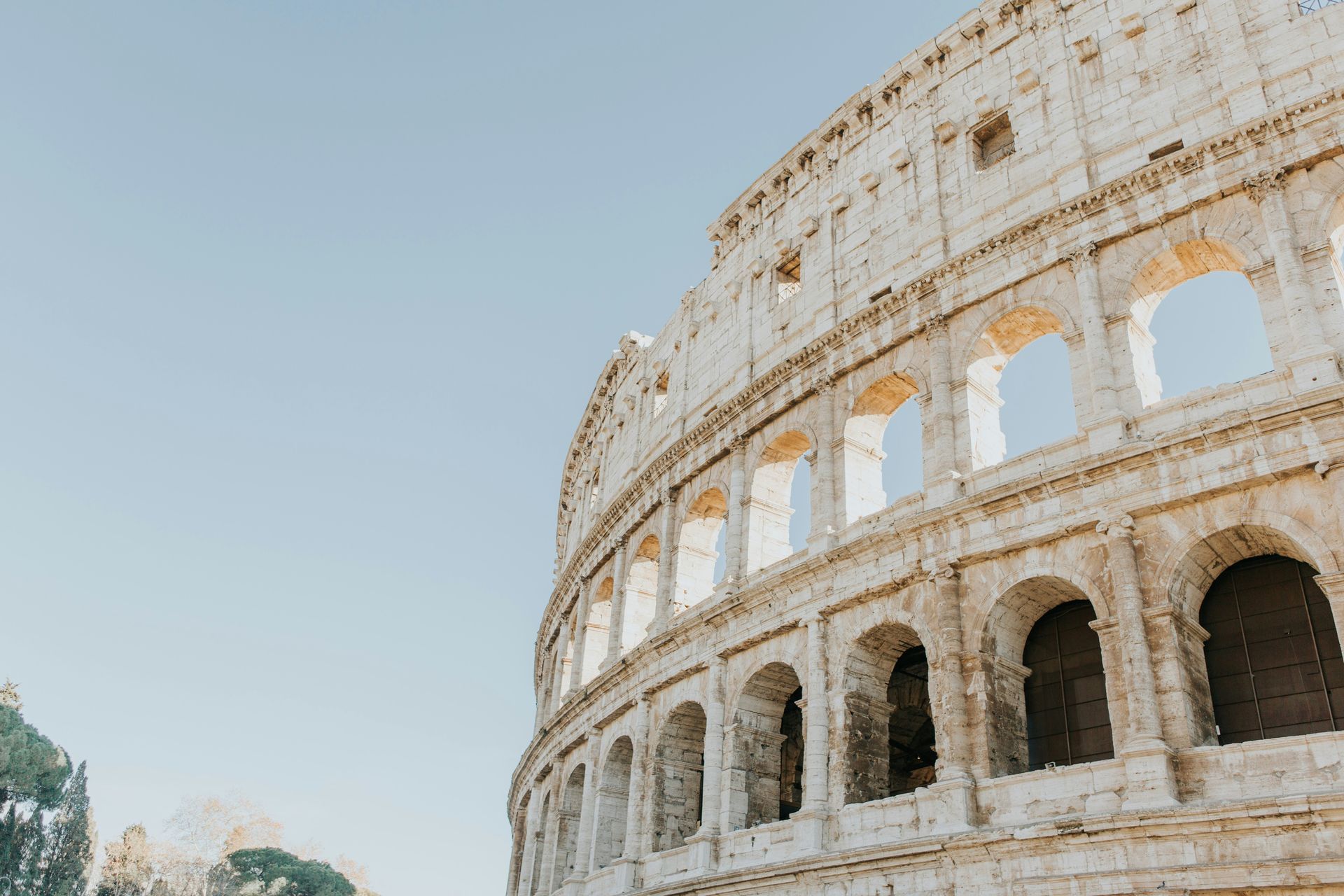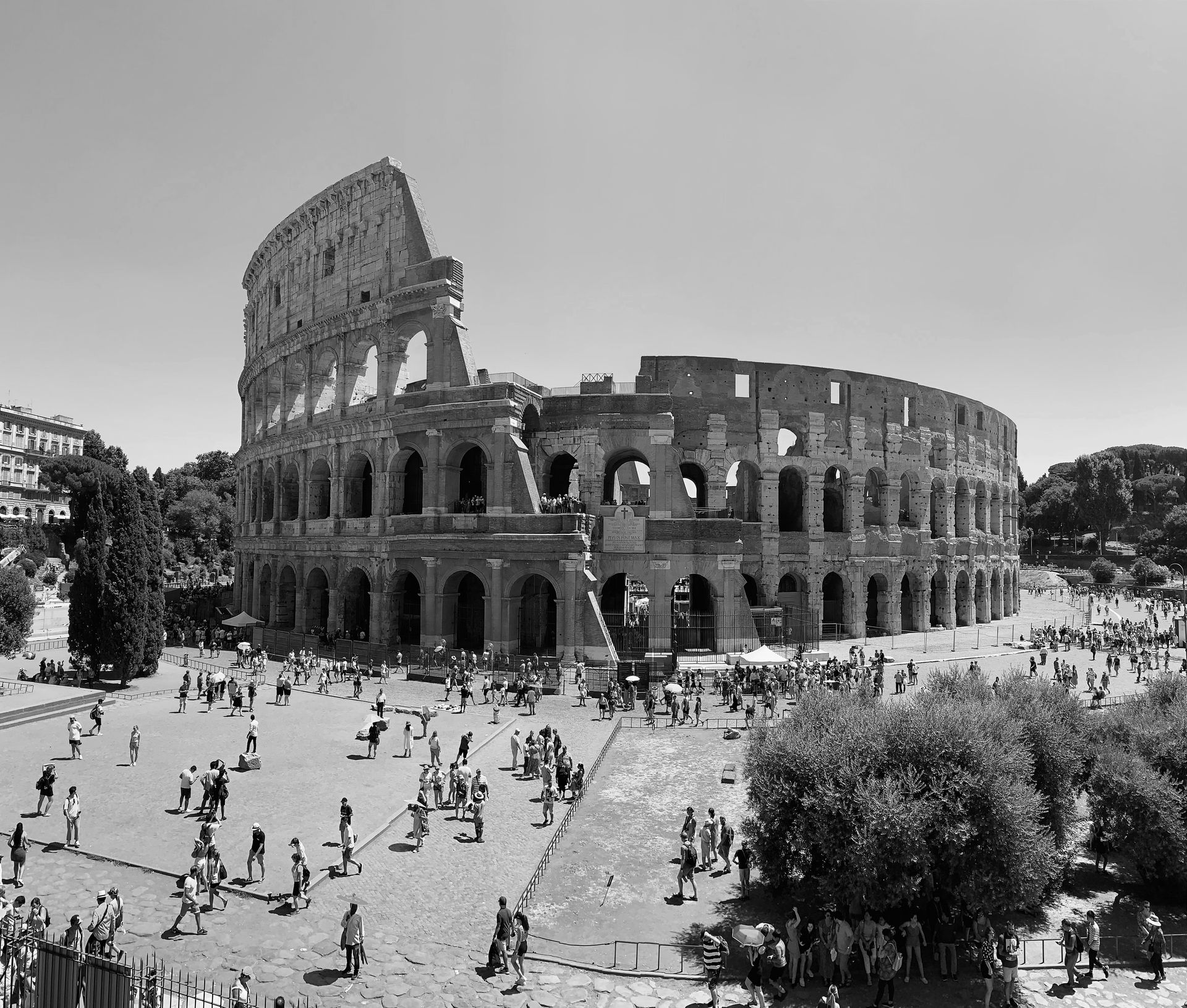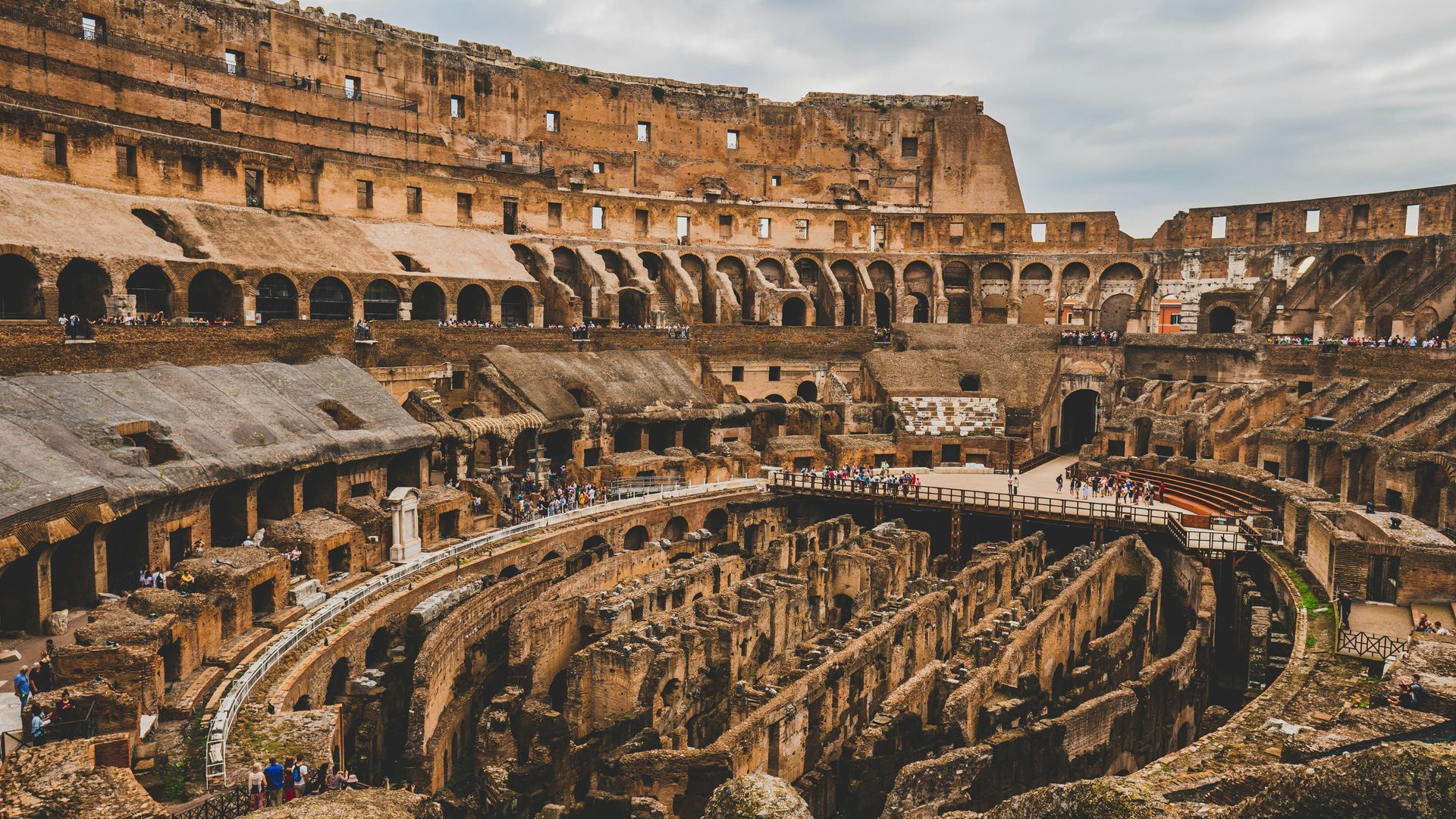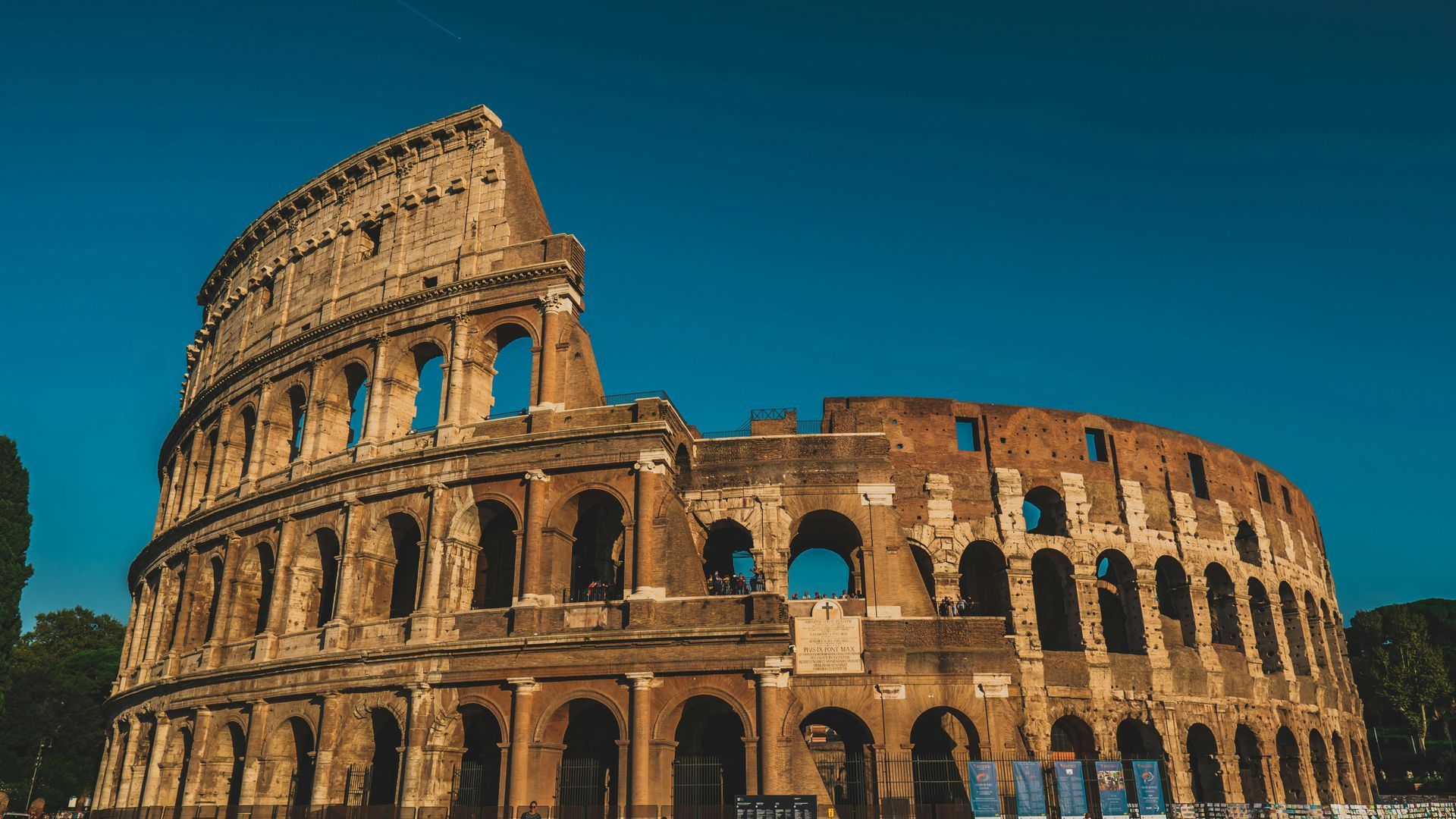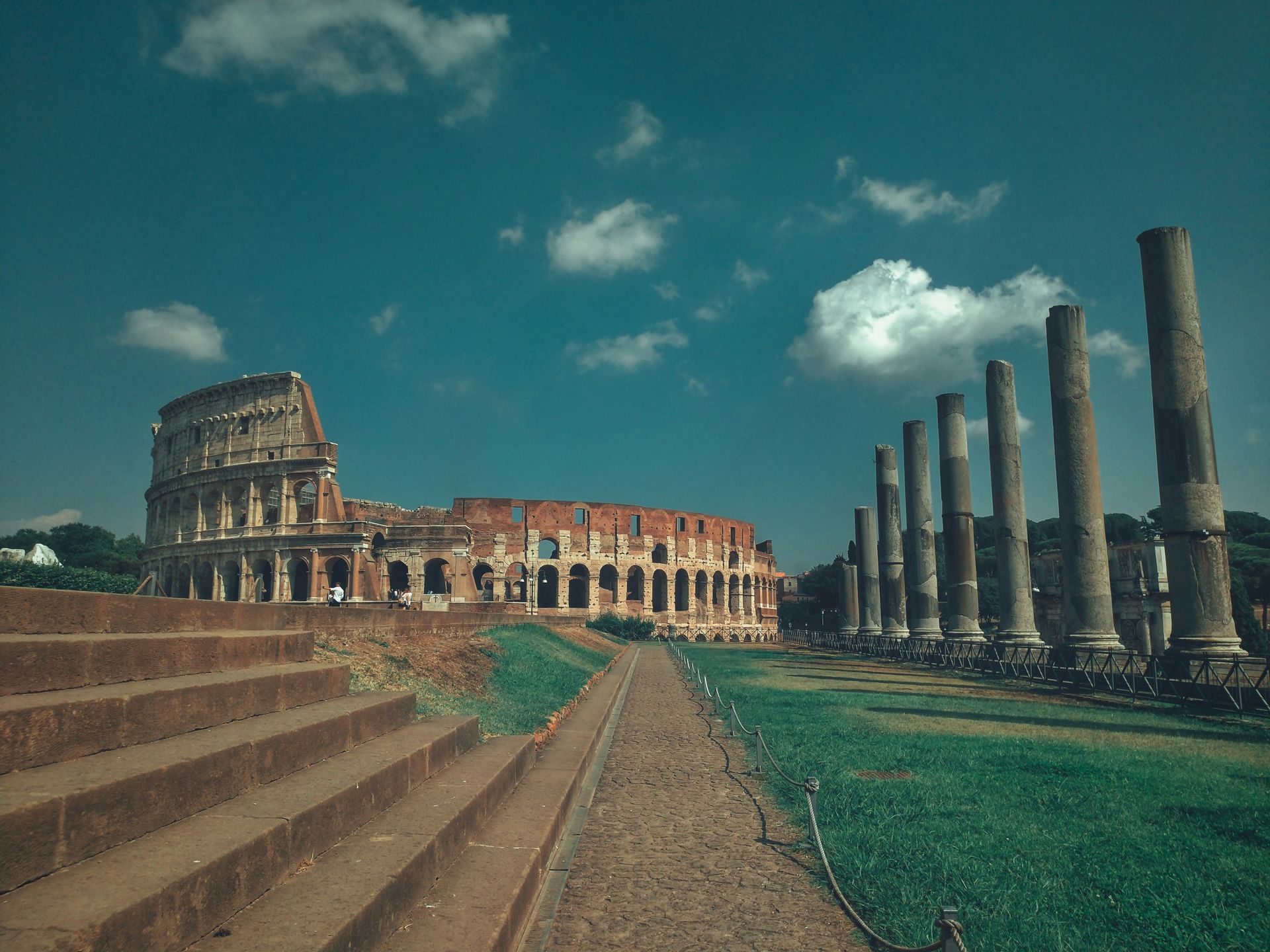Spreading Smile across the globe
Hidden Gems of Northern Italy
Hidden Gems of Italy are a testament to the country's diverse and enchanting beauty, often concealed from the traditional tourist routes. While Italy is celebrated for its iconic cities like Rome, Florence, Venice, and the Amalfi and Cinque Terre coasts, it's the lesser-known destinations that promise a unique journey. These unexplored regions offer travellers a chance to experience Italy's authentic culinary delights, rich historical narratives, and stunning natural landscapes. From the northern reaches to the southern shores, these Hidden Gems of Italy reveal a different facet of this remarkable nation.
Lake Orta - Piedmont
Hidden Gems of Italy come to life at Lake Orta, tucked away near the Swiss border in the heart of Piedmont. This hidden paradise often evades the spotlight compared to its more famous counterparts like Lake Como and Lake Garda. The historic town of Orta San Giulio, with its Baroque and Medieval architecture, cobbled streets, and idyllic Piazza Motta, enchants visitors. The glistening waters of the lake itself invite moments of serenity. What makes Lake Orta truly extraordinary is the mysterious island at its centre—a tranquil sanctuary inhabited by resident nuns.
Treviso - Veneto
Among the Hidden Gems of Italy, Treviso stands as a city in the Veneto region that retains its genuine northern Italian charm. Meandering through its narrow cobbled lanes, picturesque canals, and medieval city walls feels like a step back. Positioned on the fringes of the renowned Prosecco wine region, Treviso provides a delightful excuse for an aperitivo with a glass of Italy's renowned sparkling Prosecco.
Aosta Valley
Nestled among the bordering landscapes of Switzerland and France, the Aosta Valley showcases breathtaking alpine scenery, perched castles, and traditions that thrive throughout the year. When spring and summer arrive, the region's walking trails entice explorers. This season also brings lively festivals that celebrate folk traditions that date back to medieval times. Be sure to savour the local cheese Fontina, a culinary delight that embodies the spirit of this Hidden Gem of Italy.
Alba - Piedmont
Alba, a sought-after destination among Italy's hidden gems, is situated in the vineyards of the Langhe Hills. Once adorned with a hundred towers, Alba exudes a charming rural ambience. It's renowned for its autumn truffle festival, a gastronomic event that captures the essence of the region. Alba is also celebrated for its dark chocolate, hazelnut groves, white truffles, and prestigious wineries. It's from this very region that the sought-after Barolo wine originates.
Camogli - Liguria
Camogli, a typical and vibrant Italian seaside village on the Ligurian Riviera di Levante, perfectly embodies the spirit of the Hidden Gems of Italy. Towering, brightly painted houses dominate the town, and it has become a magnet for visitors seeking pristine beaches, Ligurian cuisine, the rustic fishing marina, Italian culture, and a tranquil natural setting. Camogli has earned its reputation for culinary excellence, focusing on fish and seafood, particularly anchovies and tuna, as well as the iconic pesto sauce made from basil and pine nuts.
Brescia - Lombardy
Hidden Gems of Italy often come alive through history, and Brescia is no exception. In this small city, history unfolds through a tapestry of architectural styles, spanning Roman, Medieval, Renaissance, Baroque, and even Art Deco. Walking through Brescia feels like a journey through time, and a visit to the captivating Piazza della Loggia, framed by a stunning Venetian-style palace at its heart, is a must for history enthusiasts.
Trieste
Trieste is a refreshingly unique destination, an Italian city positioned near the Slovenian border with its dialect that's a delightful blend of Austrian-German, Greek, Croatian, and Italian. Trieste's neoclassical waterfront is a sight to behold, with its marina brimming with stylish, glimmering yachts. The city's offerings include clear blue skies, expansive sandy beaches, city lidos, and the surrounding vineyards. Trieste is a Hidden Gem of Italy that belongs on every traveller's Northern Italian itinerary.
Modena - Emilia-Romagna
Modena is famed for its Hidden Gems of Italy, including balsamic vinegar, Luciano Pavarotti, the Romanesque cathedral, and the nearby Ferrari museum. Beyond these illustrious attractions, Modena reveals a treasure trove of remarkable restaurants. Massimo Bottura's Osteria Francescana has twice earned a place among the world's top 50 eateries, showcasing the culinary excellence of this Hidden Gem. While in Modena, don't miss the chance to savour local specialities like stuffed tortellini and sparkling Lambrusco wine, the perfect complement to your gastronomic journey.
Chiusa / Klausen - South Tyrol
Chiusa, also known as Klausen, is one of Italy's most picturesque villages. It is situated on the banks of the Isarco River in the South Tyrolean region near the Austrian border. Chestnut groves, green fields, vineyards, and farmsteads surround the town. In the village itself, visitors are captivated by narrow alleyways, coats of arms, large bay windows, crenellated facades, and the two main squares.
Ravenna - Emilia-Romagna
Ravenna offers a treasure trove of experiences among the Hidden Gems of Italy. This city is a feast for the senses, with its diverse offerings of food, music, art, culture, history, beaches, wine, and mosaics. Ravenna is home to eight UNESCO-listed sites, making it a must-visit for history and art enthusiasts. It's also known for its two-month-long music festival, Dante Alighieri's tomb, local culinary delights, nearby beach resorts, and the opportunity to explore pinewood forests. The city's fame is derived from its stunning mosaics, dating from the fifth and sixth centuries, scattered throughout the town.
In conclusion, Italy's Hidden Gems invite you to embark on a journey less travelled, where the rich tapestry of history, diverse cuisine, and breathtaking landscapes come to life. These lesser-known destinations provide an authentic Italian experience, away from the bustling crowds, revealing the nation's soul in its purest form. Explore these Hidden Gems to uncover Italy's hidden treasures.
Hidden Gems of Central Italy
Hidden Gems of Italy beckon the adventurous traveller to explore the lesser-known treasures that this remarkable country holds. From the picturesque valleys of Tuscany to the medieval charm of Umbria, the mysterious landscapes of Molise, and the architectural wonders of San Gimignano, these destinations promise unforgettable experiences.
Garfagnana - Tuscany
The Garfagnana region is a hidden gem in the beautiful Tuscan valley north of Lucca. It is crossed by the Serchio River, and the landscape is characterized by fertile greenery, rugged mountains, and charming villages. Outdoor activities such as hiking, walking, and mountain biking are enjoyed by many people in this area. Garfagnana is home to several one-of-a-kind attractions, including a ghost town, a wind cave, and the Devil's Bridge at Borgo a Mozzano.
Gubbio - Umbria
Umbria hides many treasures, and a particular favourite among Hidden Gems of Italy is the Medieval hilltop town of Gubbio. Gubbio, a city with a history dating back over 2,000 years, is a maze of cobbled streets and stone buildings that have been perfectly preserved. Visitors can take a cable car to the summit of Mount Ingino to enjoy panoramic views of the surrounding area. In addition, Gubbio hosts Italy's oldest event, the Corsa dei Ceri, in which teams race through the streets carrying massive wooden candles.
Molise
Molise is Italy's second-smallest region and one of its best-kept secrets. Hidden Gems of Italy are plentiful here. The picturesque town of Agnone is renowned for its artisanal bells, produced by the oldest family-run bell foundry in the world. Meanwhile, Campobasso, the regional capital, boasts a stunning medieval old town. Molise offers a captivating mix of historical charm and natural beauty, with rugged mountains, rolling hills, and pristine beaches along the Adriatic coast.
San Gimignano - Tuscany
Nestled in the heart of Tuscany, San Gimignano boasts medieval architecture and, of course, its famous towers. The town's historic centre is a UNESCO World Heritage site, known for its fourteen stone towers that once symbolised wealth and power. San Gimignano offers a glimpse into medieval Tuscany, with well-preserved streets and squares that transport visitors to another time. Besides the towers, make sure to explore the Collegiate Church and indulge in the local Vernaccia wine, a crisp white wine produced in the region.
Spello - Umbria
Another gem in the heart of Italy, Spello enchants visitors with its winding medieval streets and stunning floral displays. Known as the "Città Infiorata" or "flower town," Spello hosts the Infiorata festival, during which the streets are carpeted with intricate flower petal designs. This event occurs in early June and is a magnificent spectacle. Outside of the festival, Spello's charm continues with its well-preserved historic centre and beautiful churches.
Trulli of Alberobello - Apulia
Apulia, or Puglia, is famous for its unique trulli houses, and Alberobello is the epicentre of this architectural marvel. These whitewashed conical homes are a UNESCO World Heritage Site that offers a glimpse into the region's history. Visitors can even stay in trulli that have been converted into accommodations, providing a truly immersive experience.
Norcia - Umbria
Nestled in the Sibillini Mountains, Norcia is renowned for its gastronomy. This charming town produces exceptional cured meats, particularly prosciutto and salami. For food enthusiasts, Norcia is a true Hidden Gem of Italy. Explore local shops, taste the region's specialities, and visit the beautiful town square. Nature enthusiasts will also find hiking trails and natural beauty in the nearby Monti Sibillini National Park.
Montefalco - Umbria
Montefalco is often called the "Balcony of Umbria" for its stunning views over the surrounding valley. This charming town is also known for its wine, particularly Sagrantino, one of Italy's most robust red wines. Montefalco's medieval centre is picturesque and hosts several churches with remarkable frescoes, making it a cultural and gastronomic gem.
Castelluccio di Norcia - Umbria
High in the Sibillini Mountains, Castelluccio di Norcia is a quaint village known for its stunning wildflower blooms in late spring and early summer. The surrounding plateau becomes a colourful tapestry, attracting photographers and nature enthusiasts. Besides the flowers, visitors can enjoy hiking and take in the breathtaking scenery. Hidden Gems of Italy like Castelluccio di Norcia provide a unique connection to nature and the changing seasons.
In the heart of Italy, a treasury of Hidden Gems awaits the intrepid traveller. From the mysterious ghost town of Garfagnana to the ancient charms of Gubbio, the enchanting landscapes of Molise, and the medieval splendours of San Gimignano, these lesser-known destinations reveal Italy's diverse beauty and rich history. Journey through the tranquil streets of Spello, marvel at the unique trulli houses in Alberobello, savour the culinary delights of Norcia, and bask in the vibrant blooms of Castelluccio di Norcia. These Hidden Gems of Italy promise an unforgettable adventure in a land of timeless wonder.
Hidden Gems of Southern Italy
Italy, a land of rich history, captivating art, and exquisite cuisine, is known for its iconic cities and world-famous landmarks. Despite the tourist-filled streets and crowded piazzas, the country holds many hidden gems—lesser-known destinations that offer a more intimate and authentic experience. These places, tucked away in various corners of Italy, are a testament to the nation's diverse and enchanting beauty, waiting to be explored by the discerning traveller. From medieval towns perched atop hills to charming coastal villages and ancient archaeological sites, the Hidden Gems of Italy promise unique adventures and unforgettable memories.
Civita di Bagnoregio - Lazio
Civita di Bagnoregio is often called the "Dying Town" because of its gradual erosion over the centuries. This medieval village is perched on a hilltop and can only be reached by a long footbridge. It's a unique destination, seemingly suspended in time, and is the perfect Hidden Gem for history buffs and photographers.
Matera - Basilicata
Matera, known for its cave dwellings, is one of Italy's most intriguing and unique destinations. The Sassi di Matera, a historic cave settlement, is a UNESCO World Heritage Site. Matera is gaining popularity but still qualifies as one of the Hidden Gems of Italy. Touring this labyrinth of stone-carved rooms and narrow streets offers an incredible historical journey.
Sperlonga - Lazio
Sperlonga is a charming coastal town characterized by its pristine beaches, winding alleys, and picturesque piazzas. Nestled between Rome and Naples, Sperlonga is often overlooked by travellers. A visit here reveals a relaxed and authentic Italian atmosphere, perfect for strolls and seaside relaxation. Take advantage of the Grotto of Tiberius, a cave once used as the emperor's villa and now a museum.
Paestum - Campania
The ancient ruins of Paestum, originally a Greek colony known as Poseidonia, provide an extraordinary window into Italy's history. The temples are exceptionally well-preserved, ranking among the best-preserved in the world. Paestum is also home to a fascinating archaeological museum that displays artefacts from the site. Enjoy a step back in time amid the Hidden Gems of Italy.
Castro - Apulia
Castro, a picturesque coastal town, boasts a historic centre perched on a rocky outcrop. Visitors can explore ancient churches, fortifications, and a charming harbour. Castro also has sea caves that can be explored by boat. The region's cuisine is a seafood lover's paradise, making this town a Hidden Gem for food enthusiasts as well.
Scilla - Calabria
Scilla, an idyllic coastal village in Calabria, offers stunning sea views and hidden beaches. The town is known for the Ruffo Castle, which dominates the landscape, and the legendary sea monster Scylla from Greek mythology. The charming village is a serene and lesser-known alternative to some of the more crowded Italian seaside destinations.
San Marino
San Marino is a microstate surrounded by Italy and is one of the world's oldest republics. It's a destination that's often missed, making it a true Hidden Gem. San Marino boasts dramatic mountaintop views, historic architecture, and unique attractions like the Guaita Tower and the Palazzo Pubblico. For collectors, the country is also known for its beautiful stamps and coins.
Conclusion
Discovering the Allure of Hidden Gems of Italy
Hidden Gems of Italy offers travellers an authentic experience, far removed from the tourist-packed cities and famous landmarks. These lesser-known destinations unravel the genuine charm, culture, history, and culinary wonders that make Italy an endlessly fascinating country to explore. From the mountains of the North to the coasts of the South, each region holds its treasures, waiting to be discovered by those who venture off the beaten path. By exploring the Hidden Gems of Italy, you can craft a unique and unforgettable journey that deepens your appreciation of this incredible country. Plan your trip carefully, and you will be rewarded with the beauty, history, and flavours that characterize these enchanting places.
Behind the Stones:
Secrets and Lesser-Known Facts of the Colosseum
Welcome to "Behind the Stones: Secrets and Lesser-Known Facts of the Colosseum," a journey that invites you to delve beyond the surface of this iconic landmark. Visiting the Colosseum is a rite of passage for travelers, but few are aware of the hidden tales and intriguing mysteries concealed within its ancient walls.
As you step into the grandeur of the Colosseum, you're not merely witnessing history; you're embarking on a quest to uncover its untold stories. From the whispers of gladiators to the echoes of cheering crowds, each stone holds a secret waiting to be revealed.
In this exploration, we'll peel back the layers of time to unveil the lesser-known facts and fascinating details that make the Colosseum a symbol of both triumph and tragedy. Join us as we uncover the secrets behind the stones, shedding light on the captivating history and enduring allure of this architectural marvel. Whether you're a seasoned historian or a curious traveler, prepare to be captivated by the hidden wonders of the Colosseum.
It Only Took 8 Years To Build The Colosseum
When visiting the Colosseum, one can't help but marvel at its grandeur and history. What many don't realize is that this architectural wonder was built in a remarkably short span of time—just eight years. From its inception to completion, the Colosseum's construction stands as a testament to the incredible skill and efficiency of ancient Roman engineering.
Built between AD 70 and 80 under the emperor Vespasian, the Colosseum's rapid construction defied the challenges of its time. With its massive stone arches and towering tiers, it remains an enduring symbol of Roman ingenuity and ambition.
In just eight short years, countless laborers and craftsmen worked tirelessly to bring this monumental structure to life, using innovative techniques and ingenious methods to achieve their goal. As visitors stand in awe of the Colosseum's impressive facade, they are reminded of the remarkable achievement accomplished in such a relatively brief period.
Visiting the Colosseum offers not only a glimpse into ancient Roman history but also a deeper appreciation for the incredible feat of construction that created one of the world's most iconic landmarks in just eight years.
85,000 People Could Fit Inside The Colosseum
When visiting the Colosseum, it's awe-inspiring to imagine the sheer scale of its capacity—85,000 people could fit inside this iconic amphitheater. Built in AD 70-80 under Emperor Vespasian, this colossal structure was designed to host a wide array of events, from gladiatorial contests to theatrical performances and animal hunts.
The magnitude of the Colosseum's seating capacity speaks volumes about the significance of entertainment in ancient Roman society. It was a place where people from all walks of life gathered to witness thrilling spectacles and experience the pulse of the city.
As visitors stand amidst the ancient ruins and gaze upon the towering walls of the Colosseum, they can't help but marvel at the thought of thousands of spectators filling its seats, cheering on their favorite gladiators and reveling in the excitement of the arena.
Visiting the Colosseum offers a glimpse into the vibrant social fabric of ancient Rome and the integral role that entertainment played in the lives of its citizens. The knowledge that 85,000 people once gathered within its walls adds another layer of awe and wonder to the experience of visiting this remarkable monument.
The walls used to be painted in bright colors
When visiting the Colosseum, it's intriguing to learn that its once-mighty walls were adorned with vibrant colors. Originally, the Colosseum's facade was painted in bright hues, adding to the grandeur and spectacle of the arena.
These colorful decorations served not only as embellishments but also as a reflection of the rich artistic and cultural traditions of ancient Rome. The vivid pigments would have brought the Colosseum to life, transforming it into a dazzling spectacle for the thousands of spectators who gathered within its walls.
Over time, however, the vibrant colors faded away, leaving behind the weathered stone that we see today. Despite this loss, the remnants of paint that can still be found on the Colosseum's walls offer a tantalizing glimpse into its colorful past.
As visitors explore the Colosseum and imagine the vibrant scenes that once unfolded within its walls, they are reminded of the enduring legacy of ancient Roman artistry and the ever-evolving nature of history.
Not every battle ended in death
When visiting the Colosseum, it's important to dispel the misconception that every battle held within its walls ended in death. While the amphitheater was indeed the stage for brutal gladiatorial combat, not every clash resulted in the loss of life.
In fact, many of the gladiatorial contests were carefully choreographed performances, where skilled fighters showcased their prowess in combat without necessarily aiming to kill their opponents. These skilled warriors were revered for their strength, agility, and strategic prowess, and their battles were often accompanied by elaborate displays of skill and athleticism.
Additionally, some gladiators were granted reprieves or spared by the crowd's mercy, allowing them to live to fight another day. Even in the midst of the bloodshed and excitement of the arena, there were moments of humanity and compassion that remind us of the complexities of ancient Roman society.
By understanding the nuances of gladiatorial combat, visitors to the Colosseum gain a deeper appreciation for the cultural and social dynamics of ancient Rome, where spectacle and entertainment often intertwined with questions of honor, valor, and mercy.
Thousands of animals died
Visiting the Colosseum prompts reflection on the immense toll exacted on animals throughout its history. Thousands of creatures, ranging from exotic beasts to domesticated animals, met their demise within the arena's confines.
These animals were brought from far-flung corners of the Roman Empire to partake in the spectacles that captivated audiences. From ferocious lion hunts to elaborate reenactments of mythical battles, their lives were sacrificed for the entertainment of the masses.
While the gladiators faced the arena with choice, these animals were coerced into combat, subjected to fear and uncertainty. Their deaths were often gruesome, serving as a stark reminder of the brutality that characterized ancient Roman entertainment.
As visitors contemplate the Colosseum's storied past, they bear witness to the silent testimony of these animals, whose lives were lost in the pursuit of spectacle. Their inclusion in the historical records serves as a poignant indication of the ethical dilemmas that persist in shaping our comprehension of entertainment and exploitation.
Tickets were free
When visiting the Colosseum, it's fascinating to learn that tickets to the spectacles held within its walls were often free. In ancient Rome, the cost of admission to the amphitheater was typically covered by wealthy benefactors, politicians, or emperors seeking to curry favor with the public.
These free tickets allowed citizens from all walks of life to attend the events held at the Colosseum, regardless of their socioeconomic status. For many Romans, the opportunity to witness gladiatorial contests, animal hunts, and other extravagant spectacles was a source of excitement and entertainment.
The availability of free tickets also served a political purpose, as emperors and politicians sought to maintain popular support by providing lavish displays of entertainment for the masses. By offering free admission to the Colosseum, they were able to garner favor and goodwill among the people.
Today, as visitors explore the Colosseum and imagine the bustling crowds that once filled its seats, they gain insight into the cultural and social dynamics of ancient Rome, where entertainment played a central role in shaping public opinion and political power.
It’s one of the New 7 Wonders of the World
Visiting the Colosseum is a journey into the heart of one of the New 7 Wonders of the World. This recognition emphasizes the lasting importance and worldwide fame of this age-old amphitheater, which has captivated the minds of individuals across the globe for generations.
Being named one of the New 7 Wonders of the World is a testament to the Colosseum's universal appeal and cultural importance. It serves as a symbol of human achievement and ingenuity, representing the pinnacle of architectural and engineering prowess in ancient Rome.
For visitors, standing in the shadow of the Colosseum is a humbling experience, as they contemplate the immense legacy of this iconic monument. Its inclusion among the New 7 Wonders of the World reaffirms its status as a must-see destination for travelers from all corners of the earth.
While visitors wander through the Colosseum's legendary passageways and majestic arches, they're prompted to reflect on the lasting influence of human ingenuity and the eternal fascination of ancient times. This underscores the Colosseum's lasting impact as one of the world's most remarkable wonders.
It's a Symbol of Christianity
Visiting the Colosseum offers a profound insight into its multifaceted role as a symbol of Christianity. While originally constructed as an arena for entertainment and spectacle in ancient Rome, the Colosseum's significance evolved over time.
During the Middle Ages, the Colosseum took on new meaning as a symbol of martyrdom and Christian faith. It was within these ancient walls that countless Christians faced persecution and met their fate at the hands of Roman authorities. The amphitheater's association with martyrdom transformed it into a powerful emblem of Christian resilience and sacrifice.
Today, the Colosseum stands as a potent symbol of Christianity's enduring legacy and triumph over adversity. Its iconic silhouette against the Roman skyline serves as a reminder of the faith and courage of those who stood firm in the face of persecution.
For visitors, visiting the Colosseum offers a poignant opportunity to reflect on the intertwined histories of Christianity and ancient Rome, and to appreciate the enduring significance of this remarkable monument in shaping the cultural and religious landscape of the Western world.
The Colosseum Was Covered in Marble
When visiting the Colosseum, it's fascinating to learn that its exterior was once adorned with gleaming marble. Originally, the Colosseum's facade boasted a stunning display of this luxurious stone, reflecting the opulence and grandeur of ancient Rome.
Marble wasn't just ornamental; it symbolized wealth, authority, and prominence. The gleaming white surface would have shimmered in the sunlight, making the Colosseum a dazzling spectacle for all who beheld it.
Over time, however, much of the marble was removed and repurposed for other construction projects, leaving behind the weathered stone that we see today. Despite the loss of its marble cladding, the Colosseum's enduring beauty and architectural brilliance continue to captivate visitors from around the world.
As visitors explore the Colosseum and imagine its former glory, they gain a deeper appreciation for the craftsmanship and artistry of ancient Rome, and for the rich history that has shaped this iconic monument into the symbol of resilience and endurance that it is today.
Conclusion:
Visiting the Colosseum is a journey through time, offering a glimpse into the rich tapestry of history and culture that defines ancient Rome. It's more than just a visit to a historic site; it's an immersive experience that ignites the imagination and stirs the soul.
As visitors stand amidst the ancient ruins and gaze upon the towering walls of the Colosseum, they are transported to a world where gladiators clashed, emperors reigned, and crowds roared with excitement. Each stone tells a story, each archway whispers secrets of a bygone era.
Visiting the Colosseum is a reminder of the enduring legacy of ancient Rome and its contributions to the world. It's a testament to human ingenuity, resilience, and creativity, and a symbol of the indomitable spirit of humanity.
Whether you're a history enthusiast, a curious traveler, or simply someone seeking inspiration, the Colosseum offers something for everyone. It's a place where the past comes alive, where dreams are born, and where memories are made. Visiting the Colosseum is an experience that will stay with you long after you've left its hallowed halls.
Things To Do | Travel Information | Local's Favourites








